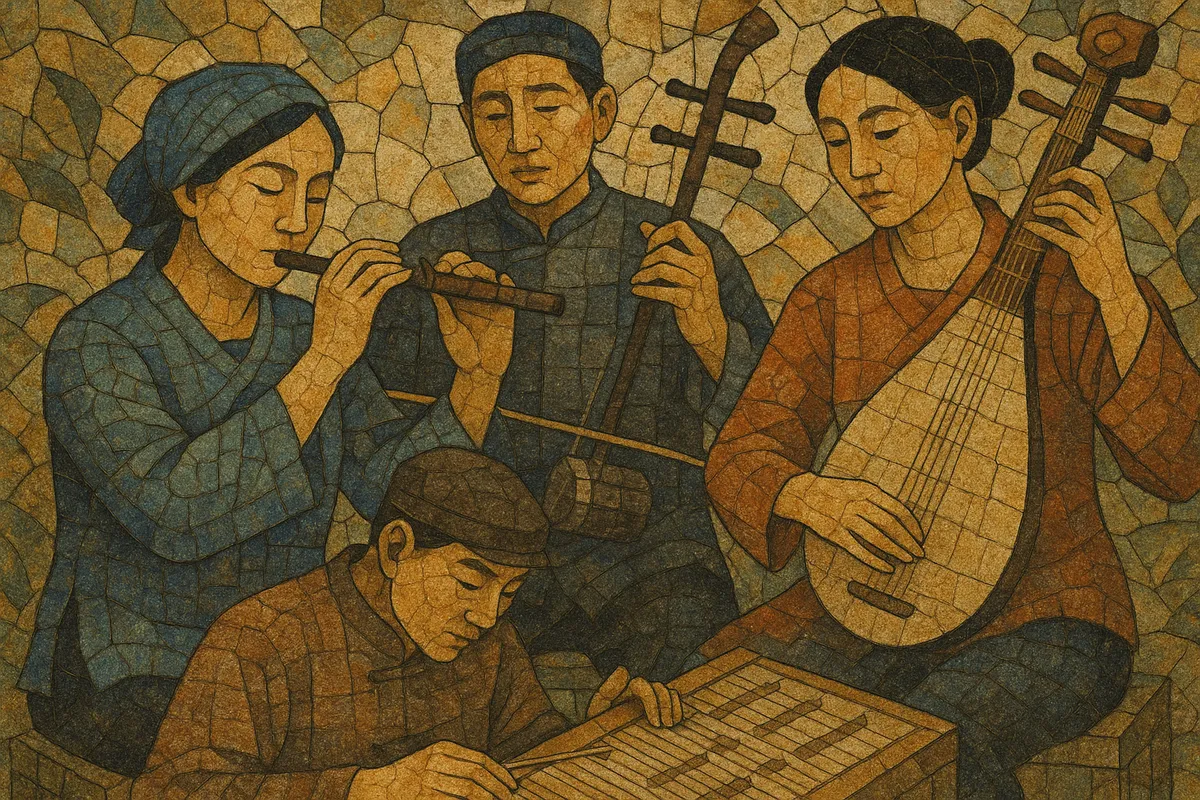Han folk music (Han minzu min'ge) is the broad body of traditional folk song and instrumental practice of the Han Chinese majority. It encompasses work chants, free‑flowing mountain songs, narrative ballads, children’s rhymes, and festive dance tunes transmitted orally across villages, market towns, and river systems.
Musically it favors pentatonic modes (gong, shang, jue, zhi, yu), heterophonic ensemble textures, and flexible rhythm that can be either free‑metered (as in many shan’ge mountain songs) or strongly pulsed (as in haozi work songs). Melodic ornament—portamento, grace notes, and narrow, expressive vibrato—is common, and lyrics draw on local dialects, proverbs, and nature imagery. While many pieces are purely vocal a cappella, others are supported by instruments such as dizi (transverse bamboo flute), erhu, pipa, sanxian, sheng, and yangqin. The style ranges from intimate, lyrical love songs to robust, antiphonal outdoor singing.
Over centuries, Han folk strains interacted with literati and theatrical traditions, later inspiring arranged folk styles heard in conservatories, film, and popular “Chinese‑style” (Zhongguo feng) pop.
The oldest layers of Han folk music trace to pre‑Qin village song and ritual. During the Han dynasty, the imperial Music Bureau (Yuefu) systematically collected and adapted folksongs (2nd century BCE–1st century CE), providing the first large corpus of Han folk texts and melodies that would circulate widely.
Through Tang and Song eras, folk tunes crossed paths with court and literati practice; poetic forms and modal thinking spread back into village repertoires. In Ming–Qing times, itinerant singers and local opera troupes (e.g., regional xiqu traditions) borrowed folk melodies, while rural festivities (temple fairs, weddings, seasonal rituals) sustained work chants (haozi), mountain songs (shan’ge), and short regional ditties (xiaodiao).
Ethnomusicologists and cultural workers recorded extensive field repertoires across North China (e.g., xintianyou), the middle Yangtze, and coastal regions. In the mid‑20th century, folk idioms were arranged for new ensembles and choruses, and “national style” concert works brought folk modes and melodies into conservatory settings and radio/film.
Since the reform era, archival projects, festivals, and university programs have revitalized local singing traditions. Folk melodies and pentatonic color inform Shidaiqu historically, then C‑pop, Mandopop, film scoring, and the “Zhongguo feng” pop wave. Indie and rock artists likewise weave Han folk timbres, story tropes, and modal figures into modern songwriting.


